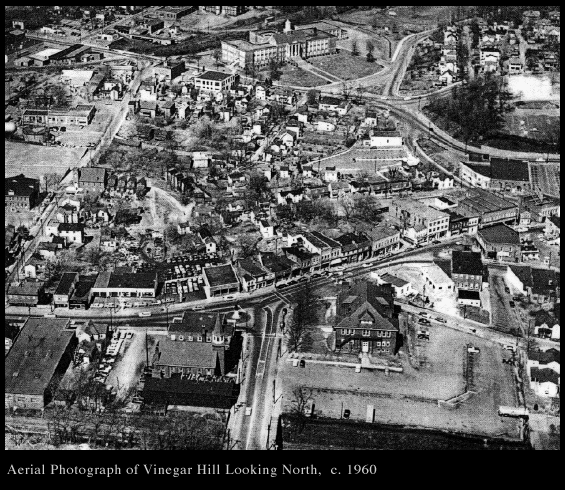 Return
to beginning
Return
to beginning


In 1850 the Louisa Railroad Company, (later the Virginia Central and later yet the Chesapeake and Ohio) was the first to arrive in Charlottesville. In 1858 the railroad connected with the Shenandoah Valley through new tunnels in the Blue Ridge Mountains, thus facilitating a major expansion in the shipment of goods and raw materials through Charlottesville. The C&O station was situated toward the southern edge of the original town grid, below Main Street. In 1863 the Southern Railroad appeared, on a roughly north-south route, crossing the previous rail line midway between downtown and the University. This rail line led to a new station, later to be called Union Station, at the point of crossing between the north-south and east-west routes. The railroads, stations and freight yards sponsored new areas of development, particularly along the southern edge of the original grid, and paralleling Main Street between the University of downtown.3.. The two crossing rail lines produced a new quadrant formation in the town's structure. The characteristics of each quadrant derive from the dominant activities and institutions; the University of Virginia in the southwest quadrant, downtown and its immediate neighborhoods in the northeast quadrant. The northwest quadrant remained largely undeveloped until the early part of the twentieth century, while the southeast quadrant emerged as the largest concentration of workers' housing. The junction of the two railroads between downtown and the University further invigorated that area (Star Hill) as it became a service center for the passengers and railroad workers who stayed at the hotels and ate at the restaurants. In addition, the railroad located a major repair shop in town which brought more industry and people to the region.
While the arrival of trains played and important role in the increased trade, manufacturing and communication in Charlottesville, the events of the Civil War left the urban fabric of the town almost completely untouched. Colonel Sheridan and Major-General Custer occupied Charlottesville on the way to Richmond in March, 1865. They remained for only three days, and aside from damage to they inflicted on the Woolen Mills, and the destruction of several bridges, they left the town unscathed. However, as with every southern town, many young men from the area died during the war. The two most notable activities in Charlottesville relating to the war were the manufacture of uniforms at the Woolen Mills and a desperately busy hospital for Confederate soldiers at the University of Virginia.
| Charlottesville Brief Narrative | Charlottesville Late 19th and Early 20th Century | Charlottesville Post World War II | Charlottesville Brief Notes |
 Charlottesville Archive
Charlottesville Archive
| Bibliography | Make a suggestion |
 IATH WWW
Server
IATH WWW
Server